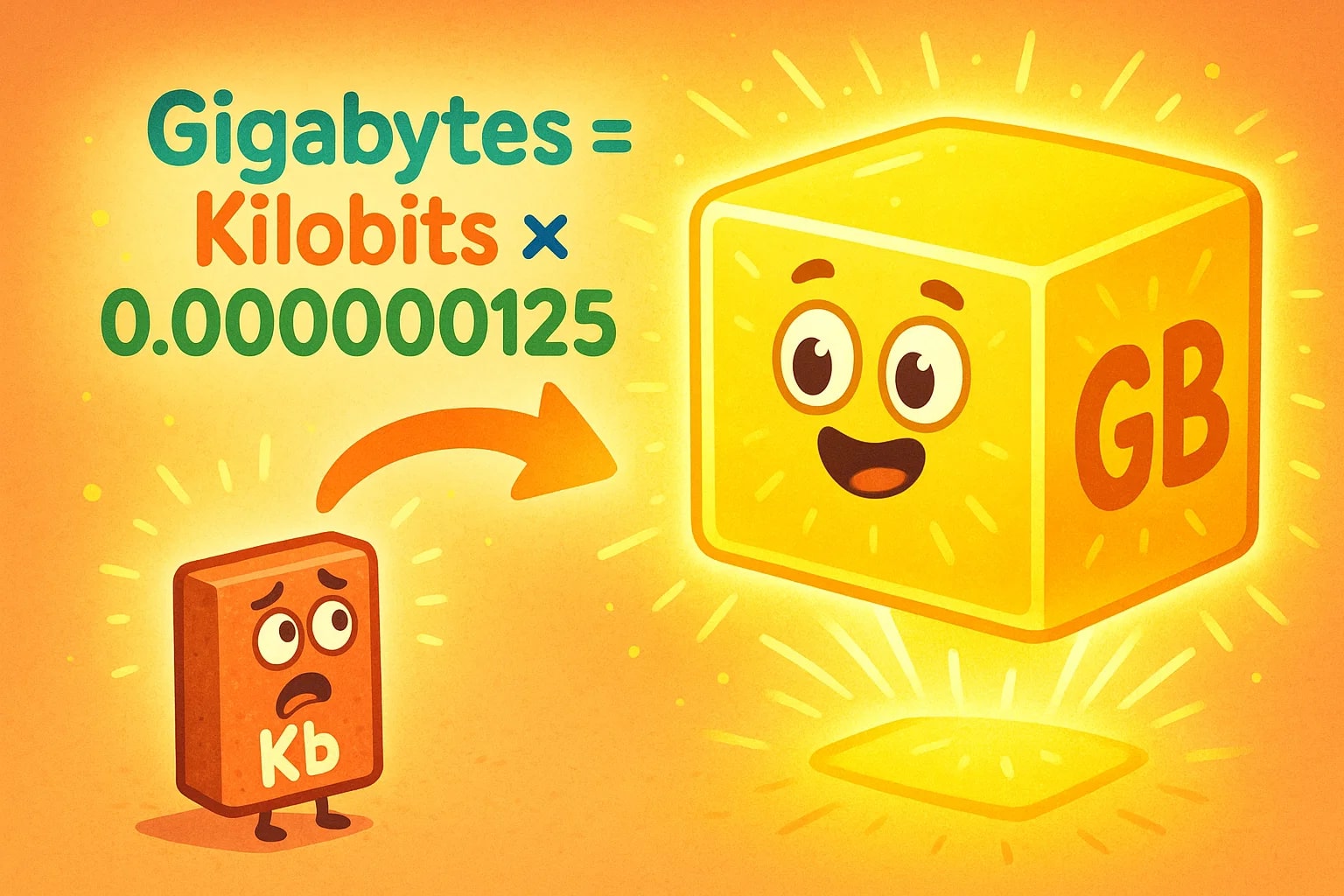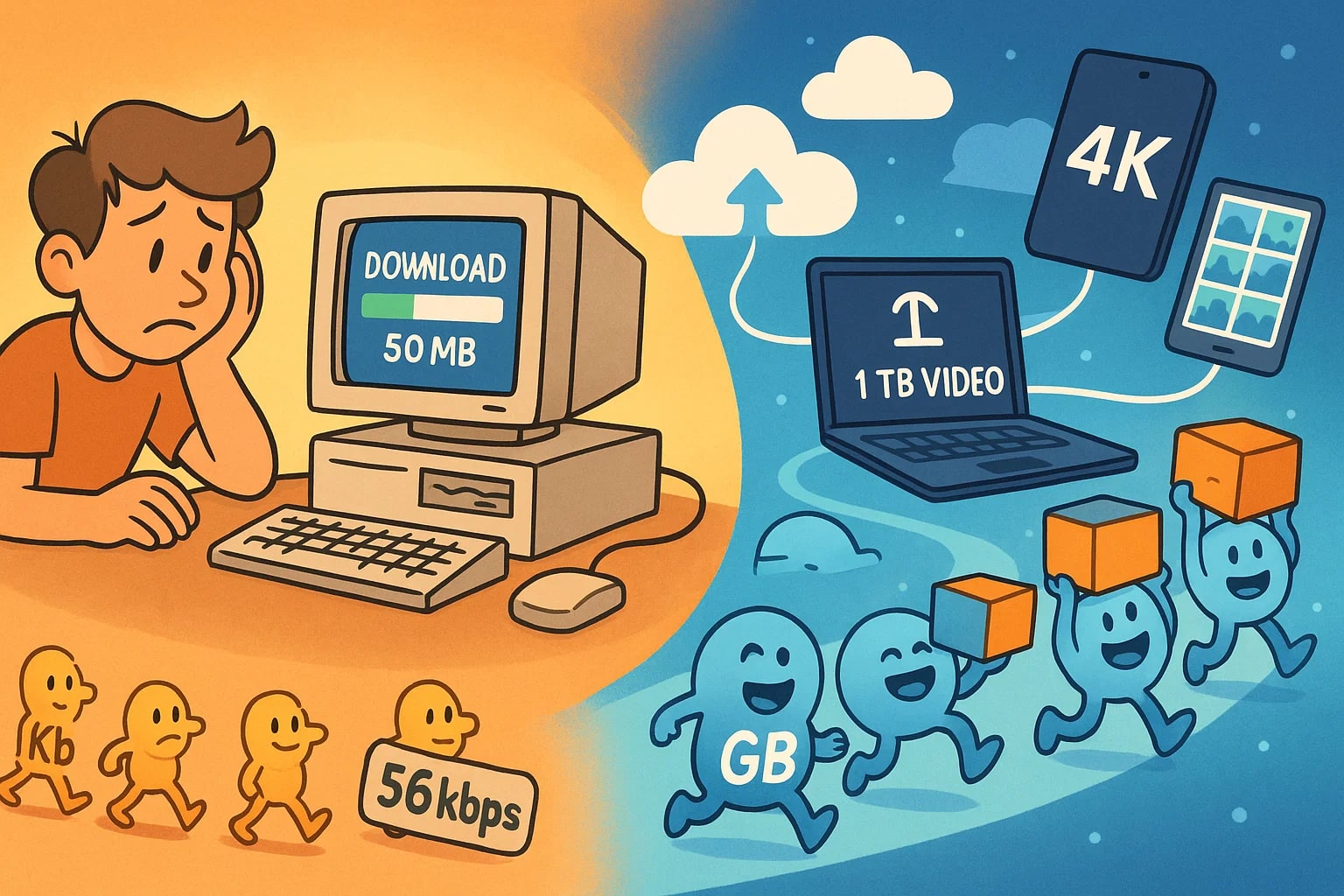kilobit to gigabyte – How to convert kbit to GB
Working with network speeds, bandwidth, or raw data often means using kilobits. But when you’re looking at storage, cloud backup sizes, or software packages, the measurement switches to gigabytes. To bridge these two scales, converting kilobits (kbit) to gigabytes (GB) gives you a clearer picture of how data flows translate into real storage requirements.
Let’s explore how this conversion works and where you’re likely to use it.

What is a kilobit (kbit)?
A kilobit is equal to 1,000 bits. It’s used to measure data transmission — especially in networking, streaming, and digital signal protocols. If your Wi-Fi shows a speed of 500 kbps, it means you’re transferring 500,000 bits of data per second.
Kilobits are useful when working with:
-
Internet bandwidth and connection speed
-
Audio/video streaming rates
-
Signal transmission in embedded systems
-
Legacy file compression tools
What is a gigabyte (GB)?
A gigabyte equals 1,000,000,000 bytes, or 8,000,000,000 bits. It’s one of the most common units for measuring data storage today — used in everything from USB drives and smartphones to cloud storage plans and software updates.
You’ll encounter gigabytes when dealing with:
-
Storage capacity
-
File and application sizes
-
System memory or RAM
-
Cloud usage reports and backups
How to convert kilobit to gigabyte
To convert kilobits to gigabytes, you need to go through two steps:
1 kilobit = 1,000 bits
1 gigabyte = 8,000,000,000 bits
So the formula is:
gigabytes = (kilobits × 1,000) ÷ 8,000,000,000
which simplifies to:
gigabytes = kilobits ÷ 8,000,000
You can also multiply by the decimal:
gigabytes = kilobits × 0.000000125
Let’s say you’ve transferred 64,000,000 kilobits of data:
64,000,000 ÷ 8,000,000 = 8 GB
An audio stream uses 128 kilobits per second. After one hour (3,600 seconds), the total transfer would be:
128 × 3,600 = 460,800 kilobits
460,800 ÷ 8,000,000 = 0.0576 GB
A large dataset transferred at 15,000,000 kilobits?
15,000,000 ÷ 8,000,000 = 1.875 GB
To save time, use the Data Storage Converter or find other conversions in our full Conversion tools page.
Did you know?
-
Gigabyte storage wasn’t common until the late 1990s — early personal computers maxed out at 20–40 MB, not even close to 1 GB.
-
Streaming high-definition video (at 5 Mbps) for 2 hours uses about 4.5 GB of data — that’s 36,000,000 kilobits.
-
Many smartphone plans offer 5–10 GB of monthly data — which is 40 to 80 million kilobits.
-
Cloud backup systems often measure upload/download rates in kilobits, but users only see their final storage total in gigabytes.
-
High-speed fiber internet can transmit 1 gigabit per second, which is 125 megabytes, or about 0.125 GB per second.
How one shift in units changed how we see data
Back when internet speeds were measured in kilobits and hard drives in megabytes, calculating storage and transfer time was a slow process. Users downloading files from the early web had to mentally convert every unit: How long would a 50 MB file take at 56 kbps?
As connection speeds soared and data volumes exploded, so did the need for larger and clearer measurements. Enter the gigabyte — no longer just for storage, but part of daily planning for backups, streaming limits, and cloud costs.
Today, people stream in 4K, sync massive photo libraries, and upload terabytes of video footage. Still, many services track speed in kilobits, making conversions to gigabytes essential for accurate planning and usage awareness.

From kilobits to gigabytes in one clean step
You don’t need to overthink the scale — just apply this formula:
gigabytes = kilobits ÷ 8,000,000
Or remember: every 8 million kilobits equals 1 gigabyte.
Use this to plan bandwidth, manage storage, and understand how long it will take to transfer a file or fill up your data cap. For faster results, visit our Data Storage Converter or browse more tools inside the Conversion tools section.

